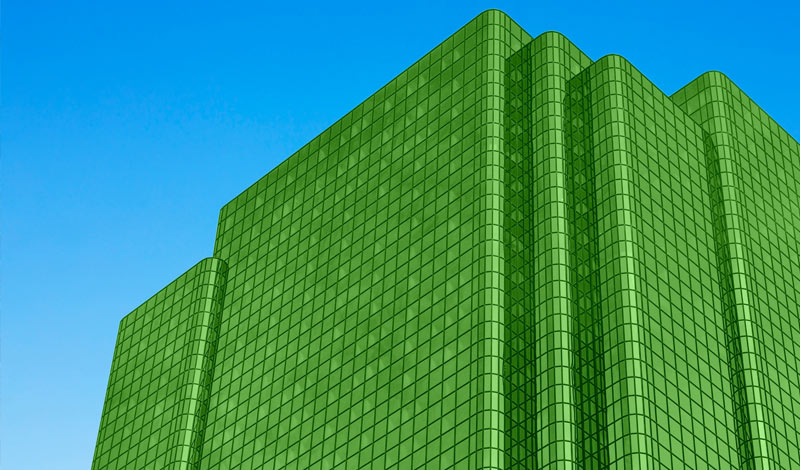Building environmental performance standards are increasingly noted as useful tools for complying with government regulations, as well as for enhancing property value. The LEED (Leadership in Energy and Environmental Design) rating system is the most widely recognized standard for measuring the environmental performance and sustainability of commercial buildings. LEED was developed and is maintained by the U.S. Green Building Council (USGBC).
How LEED certification works
LEED for New Construction and Major Renovations is a rating system for new buildings. It’s designed as a guideline for developing buildings that have a lower environmental impact and are healthier places to live and work than their conventional counterparts.
LEED can be applied to a wide variety of commercial, industrial and institutional buildings. LEED Version 4 (v4), the most recent update, added 21 new categories to accommodate specific industries, including retail, hospitality, schools, healthcare, data centers and warehouse/distribution centers.
LEED is a performance-oriented rating system where building projects can earn a maximum of 110 points for satisfying criteria designed to address specific environmental impacts inherent in the design, construction, operations and management of a building.
The LEED rating system offers four certification levels for new construction — Certified, Silver, Gold and Platinum. These correspond to the number of credits accrued in nine green design categories:
- Integrative Process
- Sustainable Sites
- Water Efficiency
- Energy and Atmosphere
- Materials and Resources
- Indoor Environmental Quality
- Location and Transportation
- Regional Priority
- Innovation
LEED v4 gives priority to improving environmental outcomes by reducing a building’s contribution to climate change, enhancing human health and protecting or restoring water resources.
Benefits of LEED certification
For builders, owners and occupants, green buildings have a number of advantages. According to the USGBC, LEED certification offers the following advantages:
- Rigorous third-party verification that the building is performing as designed.
- Reduced operating and maintenance costs.
- Lower energy and water use.
- Faster lease-up rates and higher property values.
- Potential to qualify for incentives, such as tax rebates and zoning allowances.
See LEED for Building Design and Construction for helpful resources such as information on the certification process, LEED documents and references and a directory of LEED-accredited professionals.
To help save energy and reduce your environmental footprint, consider LEED certification for your next project.
